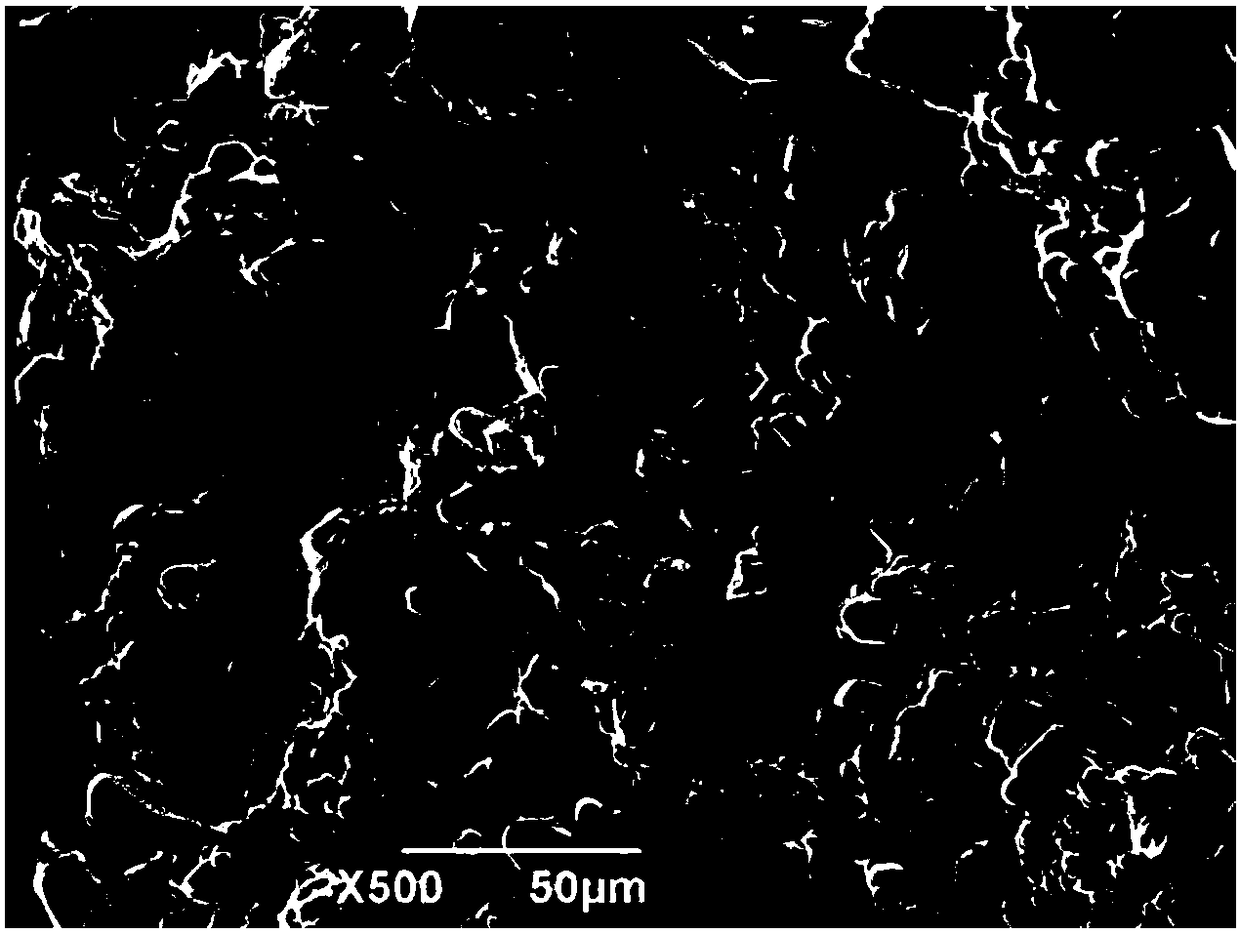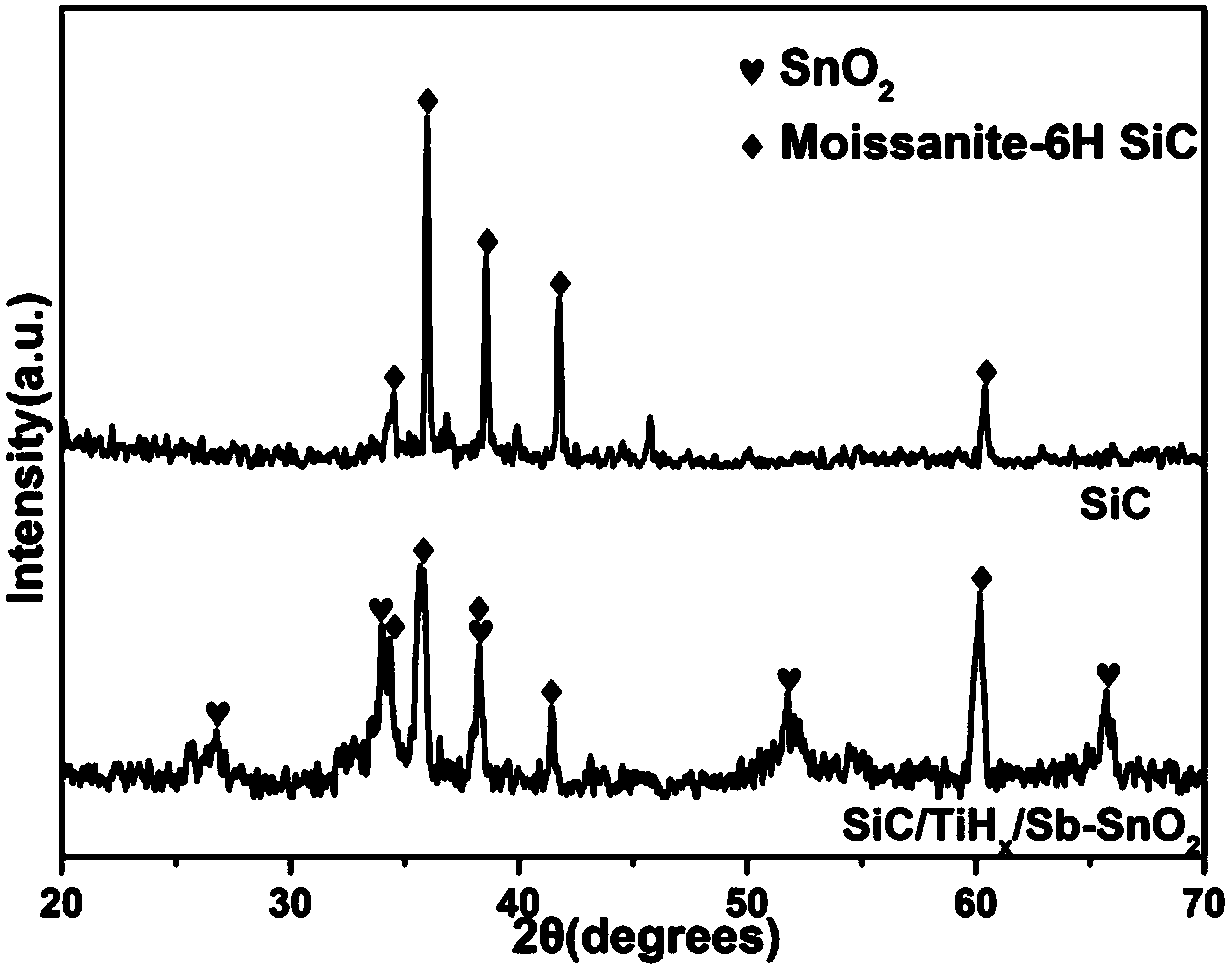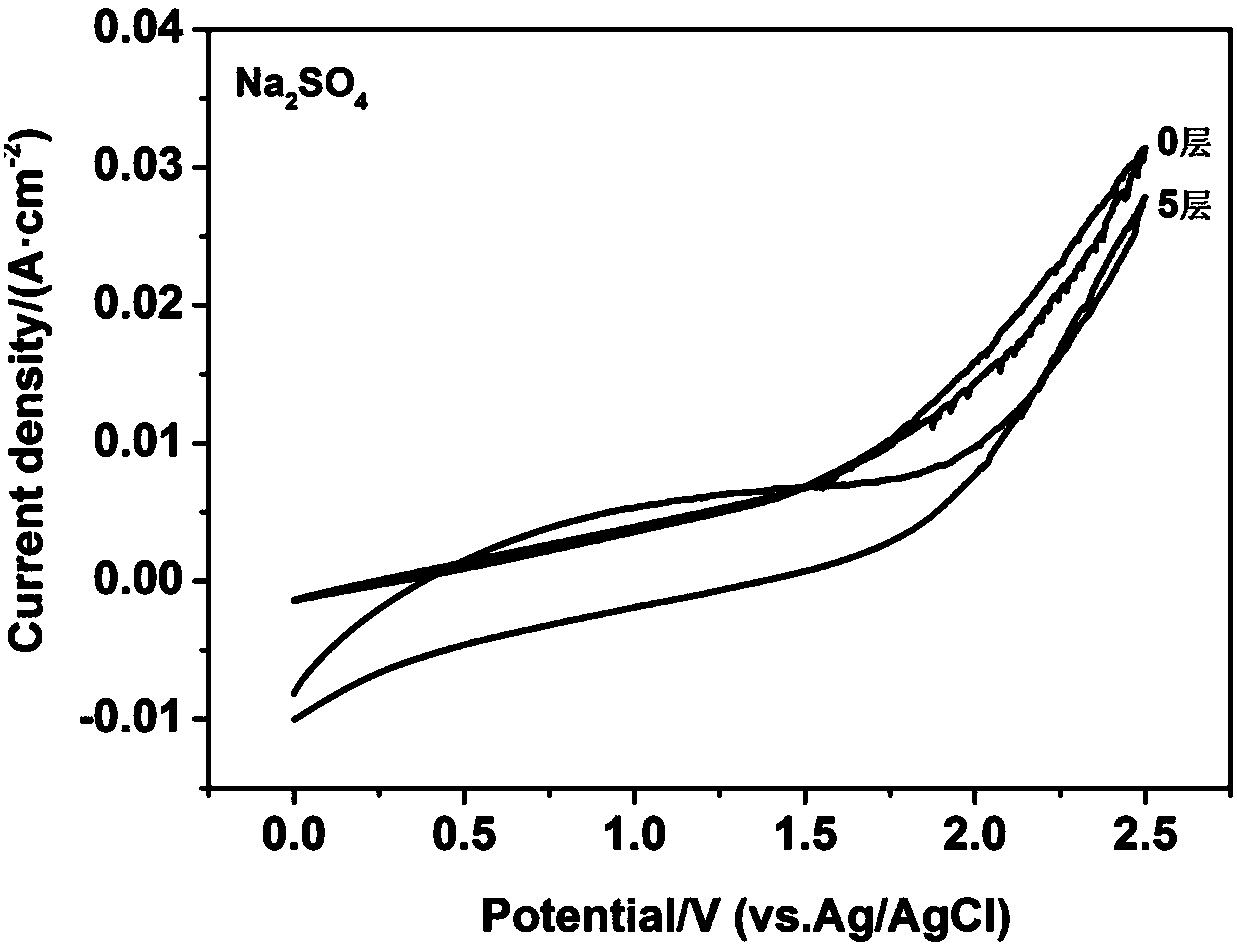Preparation method of high-catalytic activity ceramic-based stannic oxide anode
A high catalytic activity, tin dioxide technology, applied in chemical instruments and methods, electrolytic inorganic material coating, water/sewage treatment, etc., can solve the problem of few active sites on the electrode surface, limited surface area of the electrode, easy penetration of the electrolyte, etc. problems, to achieve ideal removal efficiency and energy consumption, multiple catalytic active sites, and large catalytic area
- Summary
- Abstract
- Description
- Claims
- Application Information
AI Technical Summary
Problems solved by technology
Method used
Image
Examples
Embodiment 1
[0034] 1) Use a cylindrical silicon carbide rod with a radius of 0.6 cm and a length of 6.5 cm as the substrate; put the rod-shaped silicon carbide substrate in a 10% sodium hydroxide solution by ultrasonic treatment for 5 minutes to remove surface oil; then place the rod-shaped silicon carbide substrate in a 10% mass fraction Heat and boil in oxalic acid for 1h, rinse with deionized water and set aside;
[0035] 2) In terms of volume percentage, 45% by volume of tetrabutyl titanate, 54% by volume of ethanol and 1% by volume of nitric acid were uniformly mixed to obtain a precursor solution containing tetrabutyl titanate. Immerse the clean and dry rod-shaped silicon carbide substrate in the precursor solution containing tetrabutyl titanate and ultrasonically treat it for 5 minutes at 200W, so that the surface of the silicon carbide substrate is evenly covered with the impregnating solution. After reaching room temperature, a titanium oxide layer is formed on the surface of the...
Embodiment 2
[0040] 1) Use a cylindrical silicon carbide rod with a radius of 0.6 cm and a length of 6.5 cm as the substrate; put the rod-shaped silicon carbide substrate in a 10% sodium hydroxide solution by ultrasonic treatment for 5 minutes to remove surface oil; then place the rod-shaped silicon carbide substrate in a 10% mass fraction Heat and boil in oxalic acid for 2 hours, rinse with deionized water and set aside;
[0041] 2) In terms of volume percentage, 69% by volume of tetrabutyl titanate, 30% by volume of ethanol and 1% by volume of nitric acid were uniformly mixed to obtain a precursor solution containing tetrabutyl titanate. Immerse the clean and dry rod-shaped silicon carbide substrate in the precursor solution containing tetrabutyl titanate and ultrasonically treat it for 10 minutes at 200W, so that the surface of the silicon carbide substrate is evenly covered with the impregnating solution. After reaching room temperature, a titanium oxide layer is formed on the surface ...
Embodiment 3
[0046] 1) Use a cylindrical silicon carbide rod with a radius of 0.6 cm and a length of 6.5 cm as the substrate; put the rod-shaped silicon carbide substrate in a 10% sodium hydroxide solution by ultrasonic treatment for 5 minutes to remove surface oil; then place the rod-shaped silicon carbide substrate in a 10% mass fraction Heat and boil in oxalic acid for 1h, rinse with deionized water and set aside;
[0047] 2) In terms of volume percentage, 50% volume fraction of tetrabutyl titanate, 44% volume fraction ethanol and 6% volume fraction nitric acid were uniformly mixed to obtain a precursor solution containing tetrabutyl titanate. Immerse the clean and dry rod-shaped silicon carbide substrate in the precursor solution containing tetrabutyl titanate and ultrasonically treat it for 15 minutes at 200W, so that the surface of the silicon carbide substrate is evenly covered with the impregnating solution. After reaching room temperature, a titanium oxide layer is formed on the s...
PUM
| Property | Measurement | Unit |
|---|---|---|
| Radius | aaaaa | aaaaa |
| Length | aaaaa | aaaaa |
Abstract
Description
Claims
Application Information
 Login to View More
Login to View More - R&D
- Intellectual Property
- Life Sciences
- Materials
- Tech Scout
- Unparalleled Data Quality
- Higher Quality Content
- 60% Fewer Hallucinations
Browse by: Latest US Patents, China's latest patents, Technical Efficacy Thesaurus, Application Domain, Technology Topic, Popular Technical Reports.
© 2025 PatSnap. All rights reserved.Legal|Privacy policy|Modern Slavery Act Transparency Statement|Sitemap|About US| Contact US: help@patsnap.com



